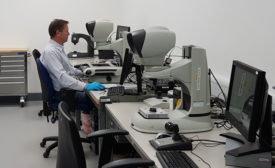Home » Keywords: » quality management standards
Items Tagged with 'quality management standards'
ARTICLES
Inspection Software Evolving to All-In-One QMS Solutions for Practical Data Management
Data-driven manufacturing is here.
September 29, 2020
Principles of Quality Management: Continuous Improvement
This may be the most important principle of quality management.
May 31, 2019
Soft Skills are Underrated
Quality professionals need strong interpersonal skills.
September 1, 2018
ISO 9001: 2015 Is Almost Here
The fifth revision of the ISO 9001 standard is on its way.
May 1, 2015
Get our new eMagazine delivered to your inbox every month.
Stay in the know with Quality’s comprehensive coverage of the manufacturing and metrology industries.
SIGN UP TODAY!Copyright ©2024. All Rights Reserved BNP Media.
Design, CMS, Hosting & Web Development :: ePublishing








